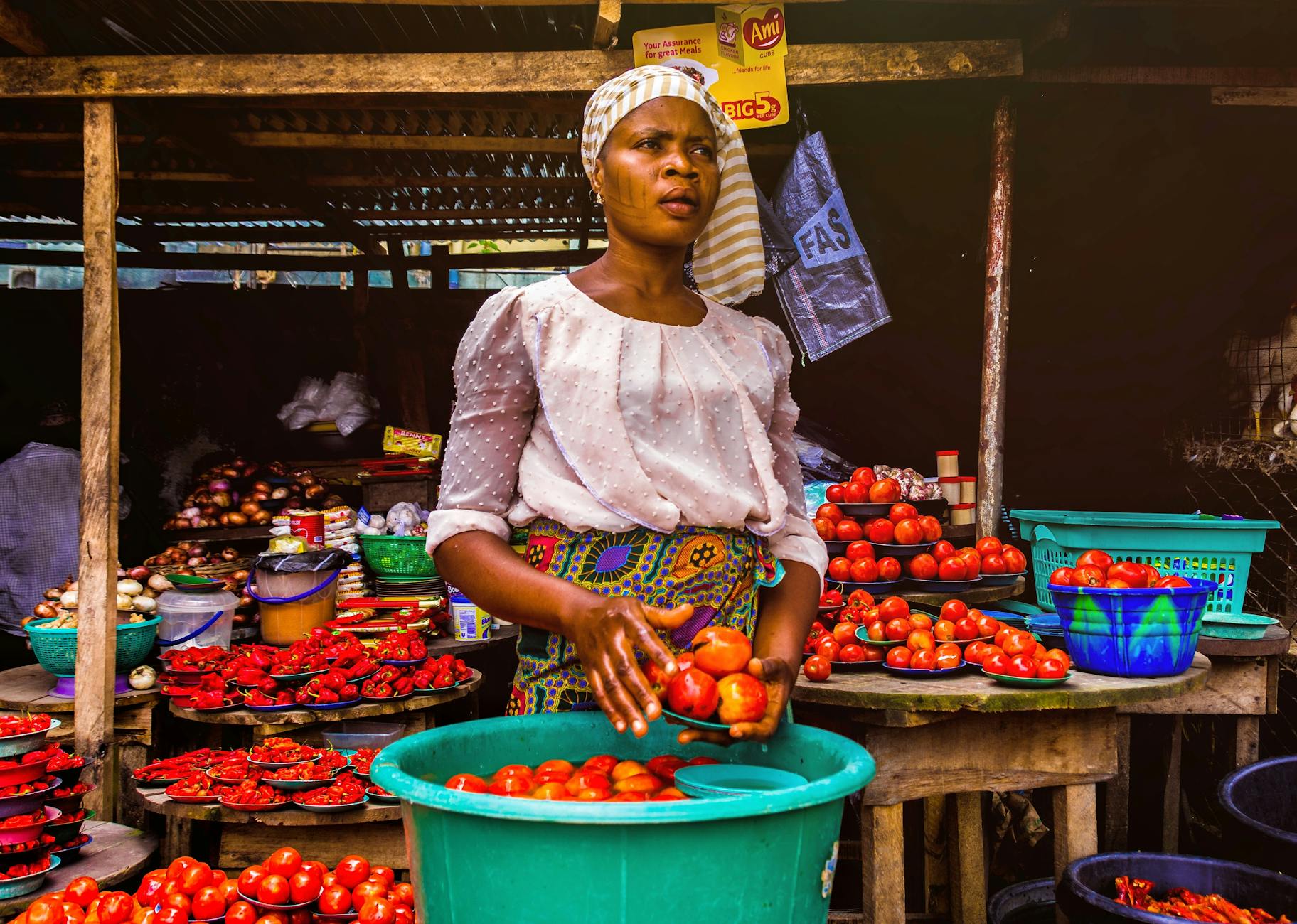Africas Telecom Turf: Competition Dynamics Explored
African Telecommunications Market Overview
Hey there! Let’s chat about Africa’s telecom scene. It’s buzzing with life and full of unique challenges and opportunities. We’re gonna dive into the major players and competition stories in this part of the world.
Major Players in Africa
Here’s the lowdown on who’s who in Africa’s telecom biz:
| Company | Country | Active Subscribers (Millions) |
|---|---|---|
| MTN Nigeria | Nigeria | 71.0 |
| Vodacom | South Africa | 41.0 |
| Airtel | Multiple Countries | 99.0 |
| Orange | Multiple Countries | 20.0 |
| Vodafone Ghana | Ghana | 11.2 |
MTN Nigeria’s topping the charts with 71 million folks hooked up, making it a big-time player. And don’t sleep on Vodafone Ghana, coming in eighth with 11.2 million. These big dogs shape the whole vibe of telecoms out here.
Market Competition Dynamics
Africa’s telecom turf is a real mixed bag! So, let’s break down what’s cooking:
-
Oligopoly Setup: We’re talking a few big shots throwing elbows—like MTN, Airtel, and Vodacom. It’s like the telecom elite club, keeping each other on their toes.
-
Barriers to Entry: Get ready to jump through hoops! It takes a truckload of cash for infrastructure and you need all sorts of licenses and spectrum—you name it, it’s a hurdle.
-
Regulations Everywhere: One country’s rule might be another’s puzzle. Regulations can either make it or break it for new players, sometimes making life easy for the old-timers. Curious about this? Check out our regulations page.
-
Tech Game Strong: To stay ahead of the pack, companies gotta throw down cash on new tech like ramping up 5G. Internet access is the name of the game.
-
Hooked on Mobiles: Phones are king! Half of Africa’s web traffic is on mobiles. Shows you just how telco’s got its fingers in our daily pie.
All these factors paint a picture of how competition unfolds here, differing wildly from other spots. Curious minds might wanna peep at how it stacks against North America’s or Asia’s rules and regs to see how Africa’s market dances to its own beat.
So, there you have it! It’s a lively telecom field, tough yet full of potential, as technology zooms ahead and the rule-books get rewritten.
Impact of Oligopolies
Influence of Big Players
In the African telecommunications business, the ruling big shots have quite the sway on competition. They not only stand tall but also have the clout to call the shots, just like in any other industry where the few lead the many. Such is the case with Vodafone and Airtel—these two giants lead the African parade, often dancing together, which doesn’t leave much room for others. When they do their tango, prices tend to rise and choices dwindle, causing innovation to take a back seat while we wait for 5G and other cool tech to pipe up.
| Company | Market Share (%) |
|---|---|
| Vodafone | 28 |
| Airtel | 24 |
| MTN Group | 22 |
| Others | 26 |
Take a peek at the table—it spells out who’s boss. With Vodafone, Airtel, and MTN Group holding most of the cards, it’s clear the market doesn’t leave a lot of wiggle room for fresh faces.
Hurdles for Newcomers
So, what stops new players from joining the game? The big wigs create major roadblocks for any newcomers trying to enter the field. To even think of competing, new guys need to shell out a mountain of cash and take on the customer loyalty of the established champs, not to mention wrestle with the existing tech infrastructure—a real high-stakes entry fee!
The hurdles don’t stop there either. Getting the green light from regulators while navigating all their hoops is no small feat, with rules favoring those who’ve been around the block. More details can be found on how these regulations shake up the market.
Other roadblocks include:
- Bulk and Bargains: Big players score big due to economies of scale, letting them charge prices no new kid can beat.
- Customer Stickiness: With their shiny brands, these firms boast customer loyalty that’s hard for any fresh face to sway.
- Resource Grab: Large firms have a grip on crucial resources like spectrum and last-mile connections, leaving newbies in the dust.
Just for context, consider the hefty €10 million budget for the PRIDA scheme, of which the EU foots €9.5 million for the period of 2018 to 2023, all to spruce up the regulatory space. Check out PRIDA’s initiative. Despite these efforts, the rulebook still tilts in favor of the old guard, giving new players tough tests to pass.
The way these big companies hold the line and block others from entry plays a massive role in shaping how competition looks in Africa. Anyone eyeing the African telecom scene should get in the know about these dynamics.
Regulatory Frameworks
Yea, y’all heard right, without solid regulatory frameworks, the African telecommunications market would be like a wild cat party with no rules. Understanding these frameworks? Well, it lets us see how they mix things up in the market competition and make the telecom scene lively.
Effects on Market Competition
When it comes down to it, these regulatory rules are kinda like the referees in the African telecommunications game. They set the tone for who can join the match, weed out any unfair tricks, and keep things honest and square.
One big piece of the pie is how a handful of telecom giants like Vodafone and Airtel run the show in Africa. They got a tight grip, sometimes working together to keep their thrones. This teamwork can block the pathway for fresh faces to step in (Investopedia).
| Thing You Should Know | How It Shakes Up the Competition |
|---|---|
| Oligopolistic Market Scene | Makes it tough for newcomers |
| Rules of the Game | Push for fair play |
| Barriers to Entry | Scares off new blood |
Giving new players a foot in the door is crucial. It chops down costs, cranks up the quality, and lights a fire under innovation. Regulators gotta smooth out the power balance so little fish can swim with the big sharks.
Regional Regulations
Regional rules help smooth out the telecom practices across Africa, striving for a level playing field everywhere you look. Take the PRIDA program, for example, it’s buzzing with big ideas to bring everyone online with affordable and equal broadband support (Policy and Regulation Initiative for Digital Africa (PRIDA)).
The PRIDA crew’s got some goals to brag about:
- Make digital life accessible for everyone
- Boost those in charge to handle more
- Sync up ICT policies to keep things smooth
These goals help make sure rules across Africa get on the same page, hello fairness, goodbye uneven growth!
PRIDA’s got some merit badges too, helping 7 countries set up their own internet governance talks and lending a hand to 17 countries in starting their first internet governance school. Such milestones are leveling up frameworks and paving ways in sectors like health, education, and agriculture (Policy and Regulation Initiative for Digital Africa (PRIDA)).
Feeling the urge to nosy around? Check these out for more:
PRIDA Programme
The Policy and Regulation Initiative for Digital Africa (PRIDA) is shaking things up in the world of African telecom. It’s like a superhero team-up where the African Union (AU), the European Union (EU), and the International Telecommunication Union (ITU) put their heads together to spark a telecom revolution across Africa that’s fair for everyone.
Objectives and Initiatives
Our mission with PRIDA is all about making sure every corner of Africa has super-fast, affordable broadband. We’re building a game plan that brings everyone – from schools to farms – into the digital era with ease (PRIDA).
Here’s what we’re focused on:
- Helping African countries lead the way in internet governance.
- Sparking conversations that bring people together to discuss the rules of the internet road.
- Crafting digital strategies that boost economies and make everyday life better for folks everywhere.
We’re rolling out these exciting initiatives:
- Giving a leg up to local discussions on internet governance.
- Dishing out training and resources like candy to schools focused on internet governance.
- Getting nerdy with monitoring tools to help keep tabs on policy progress.
Achievements and Outcomes
PRIDA has some brag-worthy achievements under its belt, making waves in the African telecom arena (PRIDA).
Check out these highlights:
- Standing behind seven countries as they threw their first internet governance party.
- Giving a shoutout to 17 countries for setting up their first internet governance classroom.
- High-fiving two existing schools and one regional school in West Africa for leveling up their game.
- Rolling out a tool that’s as handy as a pocket on a shirt for keeping policies on track.
We’ve got the cash to make magic happen:
| Total Budget | EU Contribution | Implementation Period |
|---|---|---|
| €10 million | €9.5 million | 2018-2023 |
With the AU and ITU steering the ship, PRIDA is all set to ensure Africa doesn’t just get by but thrives in the digital boom. Want to know more about how we’re shaking things up in the telecom rules department? Check out our telecommunications industry competition regulations.
By tuning into these efforts, we can see how projects like PRIDA are changing the game for Africa’s telecommunications market. Curious about how things stack up in North America and Asia? We’ve got all the scoop on our site.
Broadband Challenges in Africa
As we dig into Africa’s telecom scene, there are some serious broadband headaches weighing down the region. Two major bugbears: patchy connections and wallets burning faster than wires download.
Connectivity Issues
Sticking a flag in connectivity first, it’s like trying to plug an old adapter into a modern socket. Even though the continent is getting its digital act together, it’s still playing catch-up on broadband access. PRIDA folks note that over half of the continent’s web traffic comes from mobiles – a cue for how crucial telecoms are round here.
But here’s the kicker: Internet reach is all over the map from South Africa’s plush 54% connect rate to areas where it’s easier to spot a unicorn. Plenty of rural locales are struggling without the solid infrastructure for prompt and steady internet, locking many out of the digital loop.
To try and make internet as common as tea times, efforts like the PRIDA program push for uniform regulations and dream of wider broadband availability. Meanwhile, folks behind projects like OneWeb are aiming sky-high, using satellites to zip Wi-Fi down to earth for a better-balanced LTE and 3G spread (Tasil).
Affordability Concerns
Then we hit the wallet-ache of internet services. Between pricey phones and costly data, potential users get overshadowed, left grasping below the global digi-line. As Tasil shouts, Africa totes high connectivity tags among emerging markets.
This cost issue deepens divides – only a slice of folks can fork out for dependable internet, especially stark between city dwellers and rural folks, blocking paths to essentials like schooling, healthcare, and financial liftoffs.
| Country | Internet Penetration (%) | Average Monthly Cost (USD) |
|---|---|---|
| South Africa | 54 | 77 |
| Kenya | 42 | 68 |
| Nigeria | 35.6 | 64 |
| Ethiopia | 18 | 85 |
(Source: Tasil)
To lower the credit card crying, actions like subsidies, cash flow into infrastructures, and brewing fair competition are the way forward. Programs like OneWeb’s plan promising global surfing by 2027 drive this boat. As the competition heats up, old telco sharks must either adjust or dwindle – a blend of fresh ideas with policy savvy is the order of the day for everyone to hop on the digital carousel.
Aiming to hear more about how the rules of the game affect market competition? Check out our scoop on telecommunications industry competition regulations or take a stroll through our takes on north america it regulations comparison and asia it and telecommunications regulations. To paint the whole picture, stop by our guide on it industry regulations by continent.
Key Players in African Telecom
African telecom’s a lively place with big names like Vodafone and Airtel stirring up the scene. Let’s take a closer look at how these giants are buzzing around and making their mark.
Vodafone
Vodafone’s one of the heavyweights when it comes to African telecom. They’re deep in countries like Ghana, South Africa, and Egypt with heaps of folks on their network. In Ghana, Vodafone was hitting it big in 2020, sitting as Africa’s eighth-largest telecom player with 11.2 million active folks dialing in (Asoko Insight).
Worldwide, Vodafone’s got a whopping 439.6 million subscribers, standing tall as the second-largest network just after China’s China Mobile (Integral LLC). That kind of reach seriously shakes up the rules and challenge-stakes for everyone else in Africa’s telecom world.
Vodafone made waves by kicking off Africa’s first commercial 5G service in Lesotho back in August 2018. They started with just two big business clients, flinging them into the fast lane with “fibre-like” internet speeds using a 3.5GHz wireless spectrum.
| Country | Active Subscribers (Millions) |
|---|---|
| Ghana | 11.2 |
| South Africa | Not Known Yet |
| Egypt | Not Known Yet |
Curious about how different regions handle telecom? Check out our info on north america it regulations comparison and asia it and telecommunications regulations.
Airtel
Airtel’s another big name you’ll spot in Africa’s telecom circles. They’re hustling in loads of countries like Burkina Faso, Chad, Ghana, Nigeria, Kenya, and Uganda. With over 227 million folks under their wings, Airtel’s got a pretty wide net (Integral LLC).
Airtel brings its A-game in terms of reach and strategy, making them a formidable player in regional telecom markets. They’re stirring the pot in terms of regulation talks and keeping the competition on its toes across Africa.
| Country | Active Subscribers (Millions) |
|---|---|
| Burkina Faso | Not Known Yet |
| Chad | Not Known Yet |
| Ghana | Not Known Yet |
| Nigeria | Not Known Yet |
| Kenya | Not Known Yet |
| Uganda | Not Known Yet |
These giants, Vodafone and Airtel, are shaking things up and sparking fresh ideas while keeping the heat on in Africa’s telecom space. Want to see how this stacks up elsewhere? Have a peek at our Asia IT and telecommunications regulations for some side-by-side looks.
Technology Advancements
5G Implementations
You know what’s making waves in Africa’s tech scene? The rollout of 5G networks. It all started when Vodacom launched Africa’s first commercial 5G in Lesotho back in August 2018. They kicked things off with just two enterprise-class customers, using a 3.5GHz spectrum that basically gave them internet speed on steroids. It was like having a fiber line without the wires (Tasil).
Here’s a quick peek at who’s who in 5G across Africa:
| Country | Network Provider | Launch Year | Spectrum |
|---|---|---|---|
| Lesotho | Vodacom | 2018 | 3.5GHz |
| South Africa | MTN | 2020 | Varies |
| Kenya | Safaricom | 2021 | Varies |
Why all the fuss about 5G, you ask? Well, apart from making our download speeds faster than a cheetah on a sugar rush, it’s set to change how we connect. Whether it’s your smart fridge talking to your smartwatch or your car driving itself around, 5G’s showing us a whole new way to live. Plus, it’s shaking things up in the African telecom market by pushing companies to innovate and come up with slicker services.
Internet Accessibility Innovations
Now, let’s talk about getting everyone online. OneWeb’s working on a master plan to beam affordable internet everywhere by 2027 with a battalion of 900 low Earth orbit satellites. Imagine your internet beamed down from the stars, providing LTE, 3G, and Wi-Fi, possibly reshaping the telco scene as we know it (Tasil).
What’s cool about OneWeb:
- Planning to deploy 900 satellites that orbit close to Earth.
- Coverage offering LTE, 3G, and Wi-Fi worldwide.
- Building bridges to make the internet easier on the wallet.
| Program | Goal | Technology |
|---|---|---|
| OneWeb | Global Internet Access by 2027 | 900 Low Earth Orbit Satellites |
These gizmos in the sky could throw a curveball at traditional telecoms, making them rethink their strategies. On top of that, thanks to these newfangled tech innovations, we’re starting to close the digital gap, leveling the online field for different corners of the globe, especially Africa.
If you’re curious about how these changes stack up and want to see the playbook for market strategies, check out how Huawei’s playing the game in Africa. And if you’re into comparisons and how rules shape markets, you’ve gotta look at North America IT regulations and Asia’s telecom rules.
Industry Transformation
The African telecommunications landscape is buzzing with activity, and we’re gonna dive into two standout players that are shaking up the scene: WhatsApp and OneWeb.
WhatsApp’s African Success
We’ve noticed that WhatsApp is rockin’ the charts in Africa like a hit single. It’s snagged the most download crowns in many African nations (Tasil). It’s no wonder, really—this app hooks you in with its easy-to-use style and bag full of cool tricks that keep users glued.
What’s the draw with WhatsApp? It’s got the goods:
- Chatting without dipping into your wallet
- Talking ‘n’ talking on voice
- Snapping and yapping with video calls
- Gathering your buddies in group chats
Thanks to its super-smooth operation on even the ricketiest of networks, folks are using it for everything from friendly chitchat to serious biz, learning, and even sorting their cash flows.
OneWeb’s Global Impact
And then, there’s OneWeb, standing tall and proud in Africa’s tech arena. It’s setting out on a pretty wild mission to sprinkle affordable Internet like confetti across the globe by 2027, courtesy of a massive squad of 900 low-flying satellites (Tasil). This could be a real game-changer, especially for Africa’s nooks and crannies that regular telecoms just can’t seem to crack.
Here’s a snapshot of what OneWeb’s got cooking:
| Plan | What It Means |
|---|---|
| Internet Everywhere | Shooting up 900 satellites to beam out LTE, 3G, and Wi-Fi all over the place by 2027. |
| Wallet-Friendly Access | Making surfing the net not break the bank. |
| Reaching the Unreachable | Giving a strong web line to spots where the usual networks falter. |
With such daring moves from OneWeb and the high engagement WhatsApp enjoys, old-school telecom operators might just find themselves in a twist if they don’t keep up with the times. These smart ideas are a good nudge for local African companies to keep pushing the envelope.
If you wanna know more about the nitty-gritty rules shaping the telecom industry, have a peek at our piece on telecommunications industry competition regulations. For a broader view, swing by our guides on IT industry regulations by continent, featuring a thorough scoop on North America IT regulations comparison and Asia IT and telecommunications regulations.
Huawei in the African Market
Market Dominance Strategies
Man, you gotta hand it to Huawei for how they shook up the game in Africa’s telecommunication scene. Back in 2006, they weren’t just tossing around some phones; they were already dominating the CDMA playground with sales busting $2 billion across 40 countries (Knowledge at Wharton). They went beyond just selling gadgets; they crafted whole solutions, pivoting from the norm.
The price tags on their stuff? Hard to beat. They hit that sweet spot of affordability without skimping on quality, so developing areas were all in. But wait, there’s more! Customer service got lit — like, they’d bend over backward to keep folks happy, turning users into advocates for their brand.
And they put money where their mouth is by funneling cash back into research and development. By 2007, they had this massive team — over 83,000 of ’em worldwide — and 43% were knee-deep in R&D. Imagine being the fourth top patent player globally with 20,000 ideas in the works. That’s a tech titan right there.
Feast your eyes on these R&D numbers:
| Year | Revenue ($B) | R&D Investment ($B) | Percent Invested |
|---|---|---|---|
| 2007 | 16 | 1.6 | 10% |
| 2006 | 2 | 0.2 | 10% |
Putting constant focus on R&D didn’t just keep them ticking but turned them into a fierce competitor on the global stage, a must-have in the whirlwind that is telecommunications.
Business Expansion Efforts
Let’s talk about how Huawei blew up their African adventure. Within a decade, they were all over, scoring $16 billion in contract sales, with a big chunk — 72% — from global pockets (Knowledge at Wharton).
Huawei wasn’t just about clocking in; they went all out, shaking hands across diverse tech lines. They evolved from just being the gadget guys to a full-on solutions empire, covering every telecom itch there is — wires, no wires, anything.
And these guys don’t just enter a room; they own it. Right now, Huawei is the big cheese in global wireless networks, holding the third spot, second in fixed-line networks and switches. In their mind, the sky’s the limit and nothing’s stopping them from laying claim to the number one spot (Knowledge at Wharton).
Competition isn’t exactly a walk in the park though. They’re sparring with heavyweights like Alcatel-Lucent, Cisco Systems, Nokia Siemens Networks, and Ericsson, not to mention fellow budget warriors like ZTE Corp. But Huawei keeps sippin’ the growth-juice with smart investments and fresh ideas.
Wanna dive deeper into how the big guys play by the rules around the world? Check out how regulators are doing their thing in our pieces on north america IT regulations comparison and asia IT and telecommunications regulations.
Stick to the game plan, balancing killer prices, killer service, creative R&D, and those all-in-one solutions — and Huawei’s still going strong in Africa and stretching their empire across the globe.













